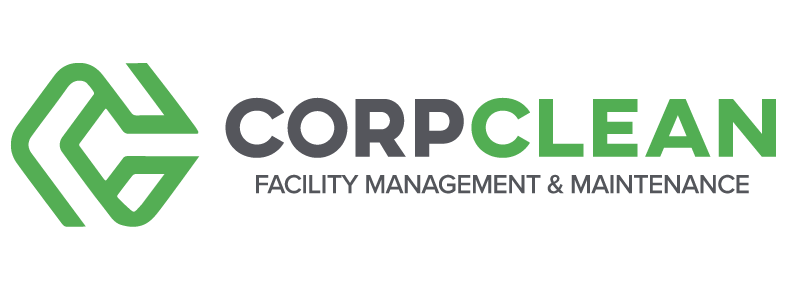The Most Common Pests in Our Area (And Tips on How to Deal With Them)
With warm temperatures approaching, many businesses have a backlog of work postponed from the colder seasons, and one job often overlooked is pest control and management.
Insects tend to migrate indoors during the winter in search of a warmer climate and waste no time building a home and reproducing, which evolves into a much bigger problem in the warmer months. A pest or rodent problem in and around a facility poses threats to productivity, employee health through the spreading of contamination and diseases, and structural integrity and safety of the building.
Keep reading to learn the most common pests that you might find in and around your facility, as well as tips for how to identify and deal with them, whether through commercial management practices—trapping, baiting, insecticides, and pesticides, or through secondary practices—insect repelling plants and flowers, potent smelling ingredients such as peppermint oil and garlic, and for some friendly tips on handling minor problems on your own.
Ants
Social insects live in colonies of hundreds to thousands and are attracted to places where food has been left out or dropped. Ants are one of the most problematic pests, as they’re often hard to see and blend in with darker surfaces. Moreover, if you see one, there are many others nearby. Common control techniques include cleaning up spills, routinely removing trash, and applying bait stations and traps.
Box Elder and Stink Bugs
Drawn to warmth and exterior walls facing the sun, these insects are not a risk for damage or biting. However, they can stain surfaces as box elder bugs produce liquid feces, and stink bugs secrete a yellow liquid. Practical prevention methods for minor problems include sealing windows and cracks, removing box elder trees around the area, or a simple solution of warm, soapy water that can deter and even kill box elder and stink bugs.
Flies
Drain flies, cluster flies, gnats. Flies are insects with various species that have adapted to living in many places (drains, inside walls, trash bins). Most flies are only a nuisance, though some species can bite. The bigger issue that flies bring is the threat of infestations, as flies can produce more than a million offspring in weeks.
For minor problems, a spray bottle with soap and water can take down and kill flies.
Cockroaches
The most problematic insect, and for a good reason. Roaches pose significant health risks, particularly in people with asthma, and can cause respiratory and gastrointestinal illnesses. Also, they carry the potential for other diseases, such as dysentery, giardia, salmonella, and gastroenteritis, to name a few. Roaches are hard to kill, as insecticides are not effective against them. Along with the myriad health problems with roaches are your brand or company’s image and reputation damage.
Ticks
Generally overlooked as problematic, ticks pose a significant health risk to employees and customers. A study from the Minnesota Department of Health states that one in 3 adult ticks have Lyme Disease, and one in 5 nymphs (immature stage) also contain the bacteria.
Good management techniques include clearing overgrown grass and weeds and removing grass and leaf clippings.
Bees
While some bees benefit ecosystems versus some of their counterparts, a business is no place for a bee. Carpenter bees cause structural damage when they nest in walls of buildings, yellowjackets are aggressive and can deliver a painful sting, and most bees cause a certain amount of panic. It’s important to know which type of bee you’re dealing with, as it might be better and cost-effective to re-home “good” bees versus dealing with them as a pest.
Rodents
Rodents pose a high risk of damage to your facility. Squirrels, rats, and mice present a fire hazard due to their ability to chew through wiring, wood, and insulation. In addition, rodent feces are both unsightly and cause allergic reactions in people.
Pest control is essential to facility management to ensure a safe and healthy workplace environment for employees and customers. Effective pest control can have the most impact by following a few steps.
1. Conduct regular inspections. Identify signs of infestations (feces, carcasses, chewed items) and locate potential nesting areas, in addition to property walk-throughs and assessment of systems where nests or destruction may have occurred (pipes, wiring, vents)
2. Implement preventative measures: Seal cracks and gaps in windows and walls, routinely declutter, keep the facility free of debris, and properly store food and dispose of food waste.
3. Educate employees: Teach employees about proper food storage and management and identify signs of a pest problem.
4. Hiring a professional pest control service. A good, quality pest control service not only deals with removing unwanted guests but also works with your wants and needs to develop a plan that will keep your facility running smoothly and critter-free. These professionals have the knowledge and the techniques of treating and eliminating pests which allow these methods to be applied most effectively and efficiently, reducing recurrence and saving you long-term money.
At CorpClean, our team of professionals and those we work with can inspect problematic areas, identify threats, develop a plan of action that includes treatment options and preventative measures, and continue to monitor the overall progress of the process while providing minimal disruption to your business.
A pest or rodent problem threatens productivity, employee health, and overall safety of your building.

